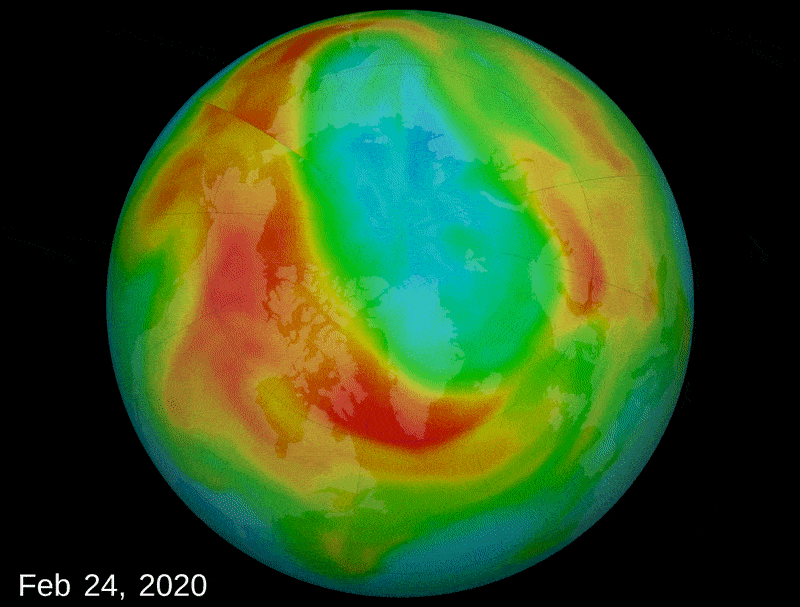
In March, a large region of very low ozone opened up above the Arctic, rivaling the historic Antarctic ozone hole that forms in the southern hemisphere each year. Extensive regions of low column ozone in the Arctic is a rare event that came about due to a very cold polar stratospheric vortex, which caused the formation of high altitude clouds and ozone-destroying reactions.
“In those years when a vortex can spin and set itself up and be undisturbed, it’s getting colder and colder,” comments ESSIC scientist Ross Salawitch in a new article by Nexus Media. Salawitch was also consulted about the phenomena for a Nature article in late March.
This year’s polar vortex was unusually long and went undisturbed by currents that would usually transport ozone from surrounding areas. Typically, the Arctic’s more varied geography produces more dynamic weather that weakens polar vortexes and prevents the creation of ozone holes. The region of low ozone diminished in April when temperatures warmed, but the ozone layer is a little thinner throughout as a result.
Salawitch is also a Professor in the Department of Atmospheric & Oceanic Science and the Department of Chemistry and Biochemistry. He came to UMD and ESSIC in 2007, after having worked at the NASA Jet Propulsion Laboratory in Pasadena, California. His research focuses on quantification of the effects of human activity on atmospheric composition. Major topics of current interest are stratospheric ozone depletion and recovery, air quality, and the global carbon cycle.
To read the full article, click here: “Another Hole in the Ozone Layer? Climate Change May Be to Blame.”






